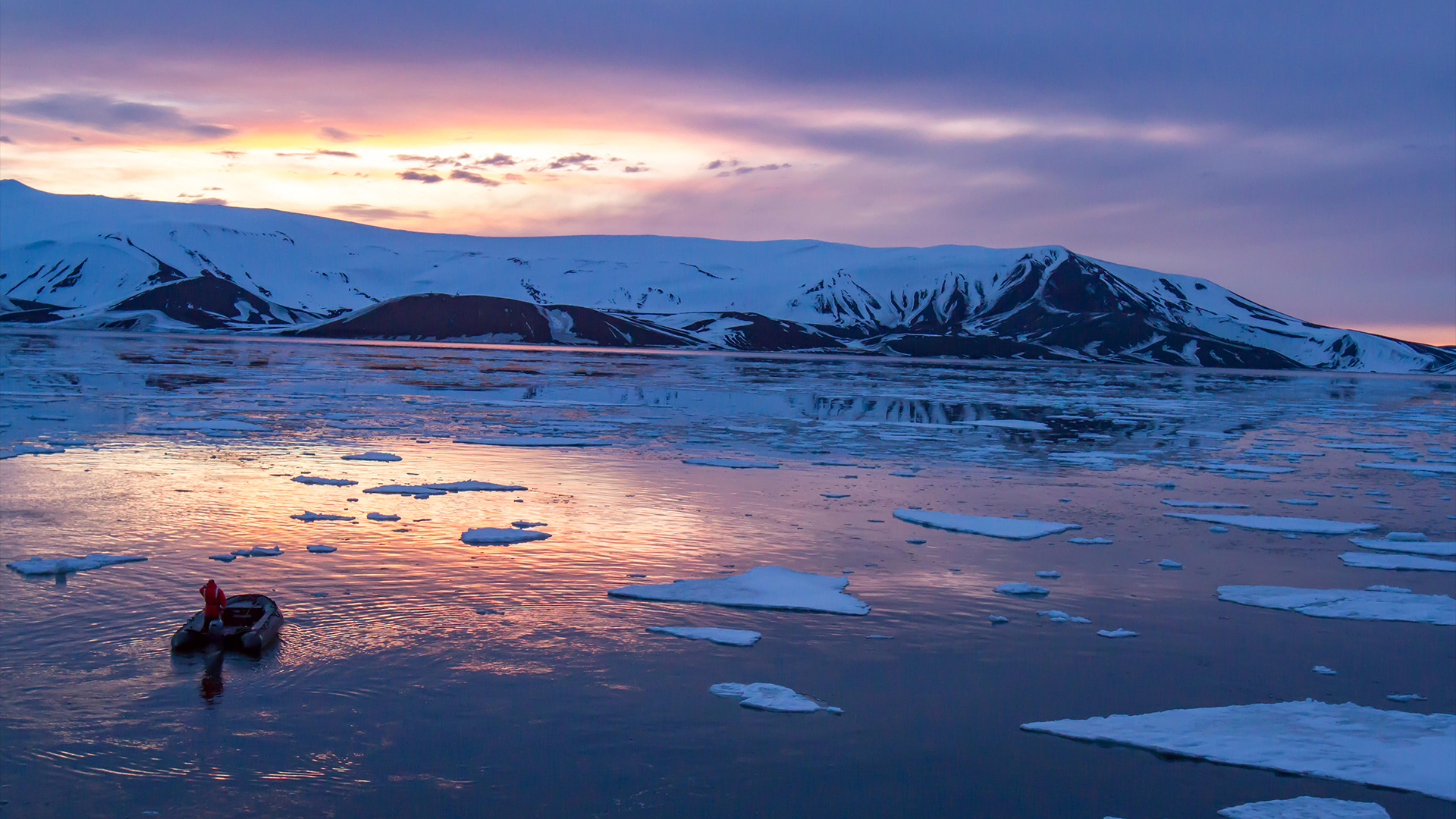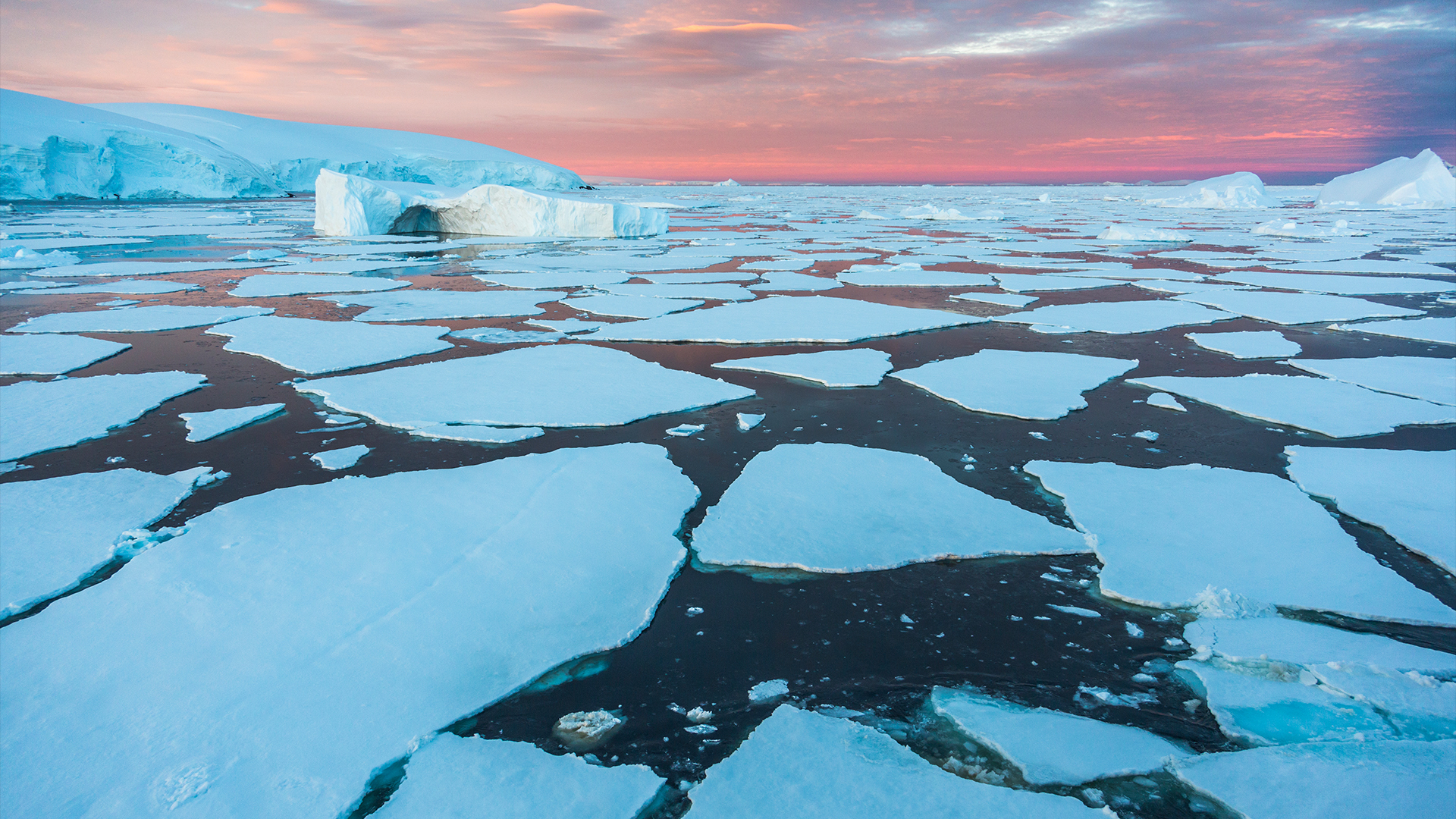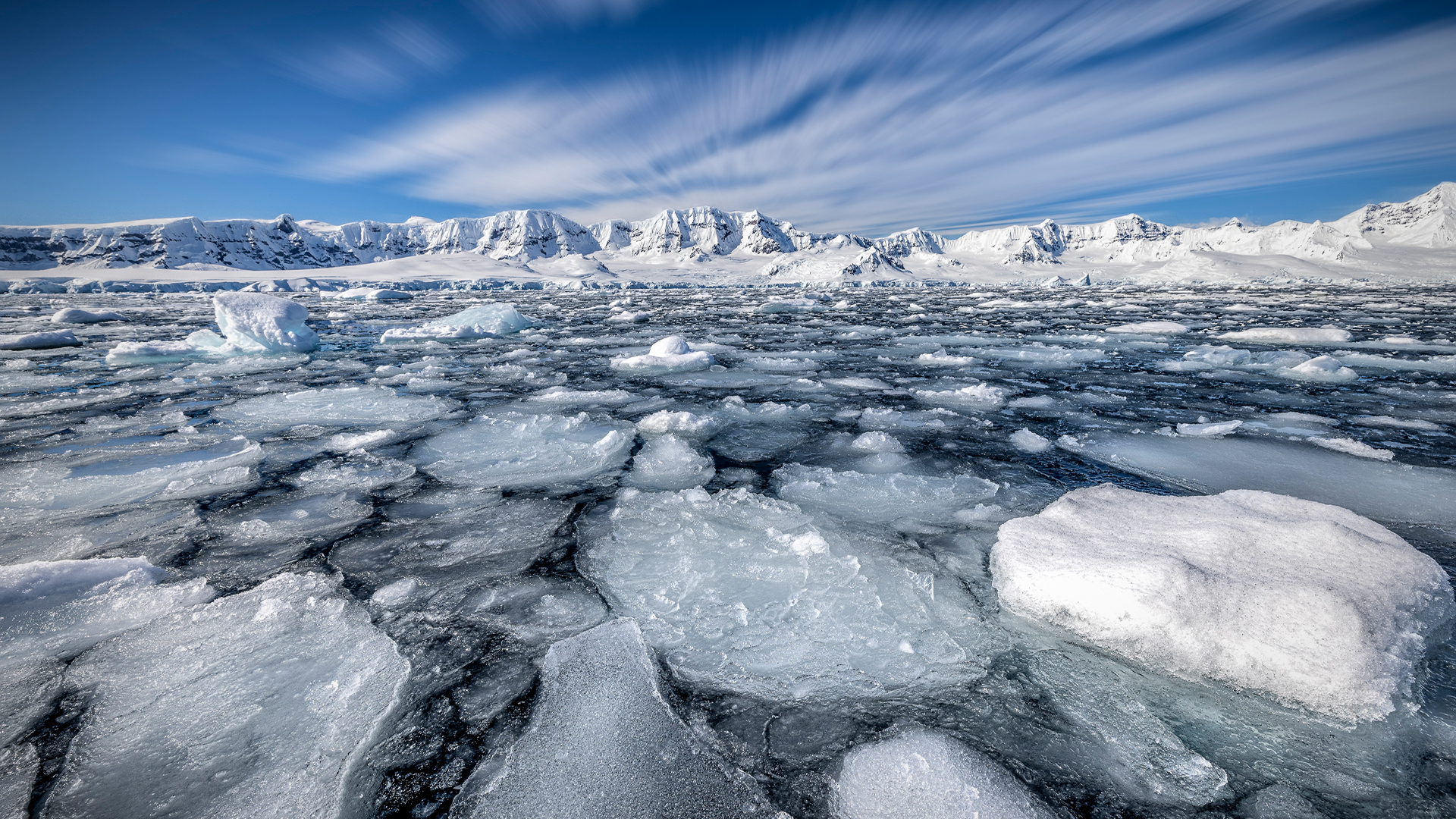
Look out over Antarctica in the summer, and time seems frozen. The South Pole's midnight sun appears to hover in place, never dropping below the horizon for weeks between November and January.
But the Antarctic’s timelessness is an illusion. Only a decade ago, on summer nights across the coast, the sun would glide ever so slightly over the ocean, dusting its ice floes in golden light.
Yet today, much of this sea ice is nowhere in sight. And scientists are increasingly alarmed that it may never come back.
"Antarctica feels very distant, but the sea ice there matters so much to all of us," Ella Gilbert, a polar climate scientist at the British Antarctic Survey, told Live Science. "It's a really vital part of our climate system."
Until recently, Antarctic sea ice fluctuated between relatively stable summer minimums and winter maximums. But after a record minimum in 2016, things began to shift. Two record lows soon followed, including the smallest minimum ever in February 2023 at just 737,000 square miles (1.91 million square kilometers).
As winter began in March of that year, scientists hoped the ice cover would rebound. But what happened instead astonished them: Antarctic ice experienced six months of record lows. At winter's peak in July, the continent was missing a chunk of ice bigger than Western Europe.
"We all thought that the minimum was as bad as it was going to get; it was 2023, not 2070," Ariaan Purich, an Antarctic climate researcher at Monash University in Australia, told Live Science. "So when winter came, we were in disbelief."
Now, in 2024, the sea ice extent has reached another near-record low: just 766,400 square miles (1.985 million square km) on Feb. 20.
A profound "regime shift" has taken place in the Antarctic, and climate scientists are racing to understand what will come next.
"When you push any part of the climate system, it has ripple effects that are felt all over the world — not necessarily immediately, but many years down the line," Gilbert said. "So by pushing the system more and more and more, we're making those ripples bigger and bigger. And eventually, we're all going to feel them."
The ocean's heartbeat
When summer turns to winter in the Antarctic, sea ice expands from its minimum of around 1 million square miles (3 million square km) to 7 million square miles (18 million square km), covering 4% of Earth's surface in irregular, porcelain-white tiles.
Most of this sea ice grows in winter during the weeks-long polar night, upon areas of open water on the floating ice shelf that wraps around the continent. Buffeted by fierce winds from inland, the seawater holes, or polynyas, inside the floating ice shelf freezes while being sprinkled with snow, building the sheet piece by piece.
The coastal ice mosaic serves a variety of purposes. First, this moat of sea ice keeps warming seawater from the continent's increasingly precarious land ice, protecting its hanging glaciers. The sea ice surface also reflects some of the sun's energy back into space in a process known as the albedo effect.

These floating platforms also play a key role in the Antarctic ecosystem, providing a habitat for creatures such as penguins and krill. Krill feast on photosynthetic algae that grow around the platforms, and their poo locks away carbon dioxide that then falls to the ocean floor.
Sea ice also helps to drive the conveyor belt of ocean circulation. As sea ice melts, cold water cascading from the continental shelf drives the deep water farther down and out, fueling a circumpolar stream that drives all of the world's ocean currents. In fact, 40% of the global ocean traces its origins to the Antarctic coastline, making it vital in regulating regional climates across the planet.
Seen this way, the rhythmic expansion and contraction of the ice sheet are like a heartbeat, pushing nutrients, oxygen and heat around the world and drawing carbon dioxide down into the deep ocean, where roughly 30% of carbon emissions are trapped for hundreds of years.
For most of recorded history, the ocean's "heartbeat" — and its impact on carbon cycling and ocean circulation — was fairly steady. But then it skipped a beat.
Off the charts
Earth's sea ice is charted each year by the satellite record, which has measured sea ice fluctuations at both poles since 1979.
The Arctic's future has always been simple and bleak: a steady plunge in ice coverage by more than 12% each decade.
Yet, at the opposite end of the planet, the Antarctic appeared to be beating the odds. Until 2015, the Antarctic's ice extent didn't just hold fast — it grew slightly and, in fact, hit an all-time high in 2014. This means that when the precipitous fall came in 2016, scientists weren't sure if they were observing a fluke event or an ominous, fundamental shift.
"It's possible that what's happened over the last seven years just might continue," Martin Siegert, a glaciologist who led an investigation of the Antarctic's dwindling sea ice, told Live Science.
A key contributor to the Arctic's rapid melting is a process called surface albedo feedback. When sea ice melts, it uncovers darker waters that absorb more of the sun's rays. This vicious inversion of the albedo effect has transformed the Arctic from a refrigerator to a radiator, and it now warms four times faster than the rest of the world.
"If we start losing sea ice annually and the same process occurs in the Antarctic as it does in the Arctic, then the Antarctic will warm at an accelerated rate.” It will be a disaster for the planet," Siegert said.
Before 2016, scientists held out faint hope that Antarctica's complex system was temporarily stabilizing the global climate. Now, that hope has faded.

In a September 2023 paper, Purich and her colleague Edward Doddridge found the first clue that the shift in the Antarctic sea ice system wasn't just a freak event: In 2015, the Southern Ocean began warming at depths of 330 to 660 feet (100 to 200 meters), and has stayed warm ever since.
As sea ice loss tends to occur in regions of high ocean warming, the latter has changed the way the atmosphere and the ocean interact to form ice, shifting the Antarctic system into a new state. It was this change, Purich said, that caused last year's record low.
And the new Antarctic is behaving differently. Before the apparent shift, there was no connection between the sea ice found at the summer minimum and that at the winter maximum. Now, the two are strongly linked.
What comes next
The immediate impacts of declining Antarctic sea ice are already here. For example, the 2022 dip caused mass die-offs of thousands of emperor penguin chicks in Western Antarctica, with scientists expecting to find even more deaths from 2023. Also in 2022, Eastern Antarctica experienced its biggest heat wave ever recorded, with temperatures climbing up to 72 F (40 C) above normal.
Related: Hundreds of emperor penguin chicks spotted plunging off a 50-foot cliff in 1st-of-its-kind footage
Moreover, the deep ocean currents surrounding Antarctica, which have already slowed by 30% since the 1990s, are predicted to slow by a further 40% by 2050.
Despite the accelerated response caused by reverse albedo feedback, scientists are careful not to call the Antarctic sea ice decline an irreversible tipping point.
"If it cooled down a bit, [sea ice] could freeze again," Purich said.
However, she notes that the bigger worry is that a lack of sea ice could trigger other, lasting tipping points across the region.
"In the absence of sea ice, the ocean swell can break apart ice shelves faster than they otherwise would," Purich said. "Once the shelves have broken away, the land ice they're supporting can slide into the ocean."
If the West Antarctic Ice Sheet alone were to break up and melt into the sea, it would elevate global sea levels by approximately 11 feet (3.4 m).
The weakening of the Antarctic-driven ocean circulation could also hasten the collapse of key ocean currents, such as the Atlantic meridional overturning circulation (AMOC), which helps maintain temperate climates in the Northern Hemisphere.
Recently, worrying studies have pointed to a downturn in AMOC's strength. If the ocean current were to weaken as much as it did during the last Ice Age, for instance, temperatures in Europe and North America could drop by as much as 9 F (5 C) within a decade.
The timing and impacts of these secondary tipping points have become vital questions. Yet despite agreement around the noticeable impact of climate change, Antarctica's complexity, the dearth of historical data, and difficulties obtaining funding to collect it make precise predictions challenging.
"The Antarctic is difficult. It's hard to model; it's very hard to measure. It's hard to even get there," Caroline Holmes, a polar researcher at the British Antarctic Survey, told Live Science. "But there's a lot of research momentum at the moment to say, look, we need to do more."
In the meantime, the obvious prescription for our ailing planetary systems still applies: urgent and deep cuts to global CO2 emissions, Siegert said.
“The only way forward is to decarbonize, and decarbonizing as soon as possible means we’ll not see the worst possible outcomes.” Siegert said.




!["[T]he First and Fifth Amendments Require ICE to Provide Information About the Whereabouts of a Detained Person"](https://images.inkl.com/s3/publisher/cover/212/reason-cover.png?w=600)


